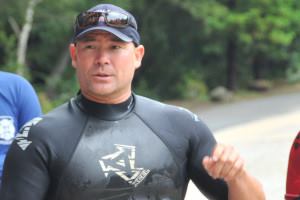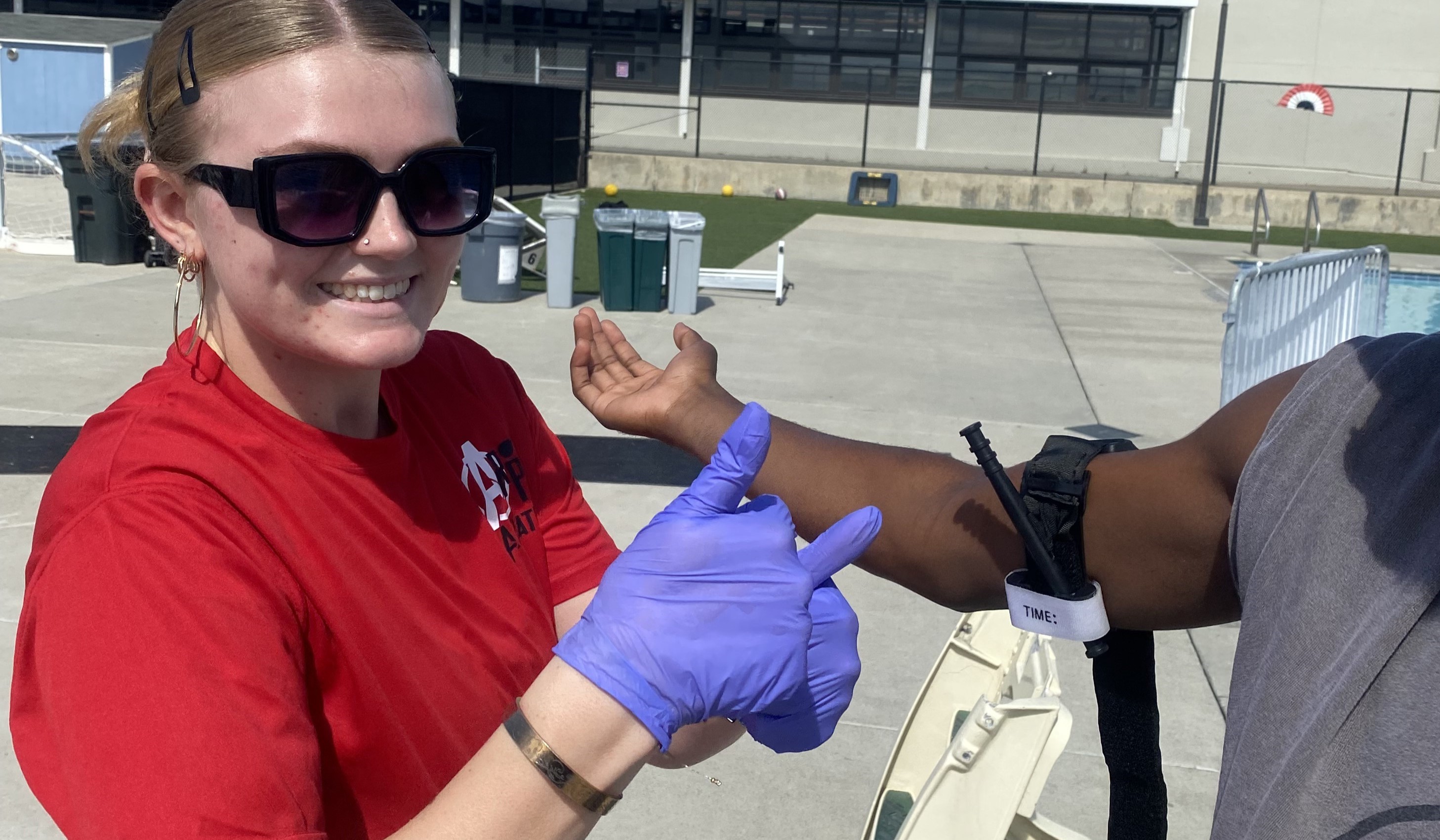Goals and challenges
The training was designed to help young lifeguards gain the confidence needed to function in a high-pressure situation and distinguish between true emergencies and minor situations.
One problem occurring in Scottsdale was that lifeguards, in a effort to do a good job, were defaulting to a “rescue” scenario every time there was an issue. For example if someone came out of the catch pool saying, “I hit my head,” the guard would immediately activate the emergency action plan (EAP), prompting all the pools to be evacuated and EMS to be called. Rarely would the victim need medical attention. Over the past two years, through continued training and increased awareness, lifeguards now are able to use first-aid skills and good judgment to make the call on whether to activate the emergency action plan.
How they did it
A crucial part of the training occurs during the 20-plus hours of pre-season instruction. Lifeguards practice skills, drills, and emergency action plans. All receive the same basic instruction, with some customization for each of the city’s pools.
As part of the pre-season, the entire 150-person staff participates in the annual Critical Incident Training. In addition to the facility staff, the police and fire departments and a 911 dispatcher work together to simulate several emergency situations.
The staff of each pool runs through at least two scenarios with all characters portrayed, including victims, upset relatives, bystanders and even media personnel. The staff members learn to collaborate with each other and work with first responders.
It also provides a sense of the intensity felt during real-life emergencies. This is especially important for young teenagers, who likely have no experience performing rescues while their adrenaline is pumping and many things are happening at once.
Managers and first responders provide input about the teams’ performance.
New guards also receive an additional five hours of training before the season starts. Part of this includes “rookie-only” EAPs to help build confidence and ease them into performing a rescue without the whole staff present.
The next day, they go through the EAPs with the more seasoned lifeguards. Newcomers also work shadow shifts with veteran lifeguards, and the whole staff takes part in training sessions each month in the off-season and weekly during summer.
The city of Scottsdale also developed a formal auditing system, called the Guard Recognition and Incentive Program, aka GRIP, to maintain high skill levels.
During the unannounced evaluations, one staff member or guest behaves as a victim, and the lifeguard on duty is assessed on his or her response to the mock emergency. The pool is evacuated and the drill proceeds as an actual emergency. The lifeguard is rated on his or her guarding, professionalism, one water rescue skill and one CPR scenario.
Each lifeguard is scored on a 100-point scale, and incentives are given to those who did particularly well. These include key chains, towels, visors, shirts and/or $25 gift cards — and a gold whistle for those who rate perfectly.
The program sets a high standard: Any lifeguard scoring less than 85 percent is relieved of their duties and must undergo remedial instruction before returning to work. Two weeks later, the guard is evaluated again. A second score below 85 percent is grounds for termination.

